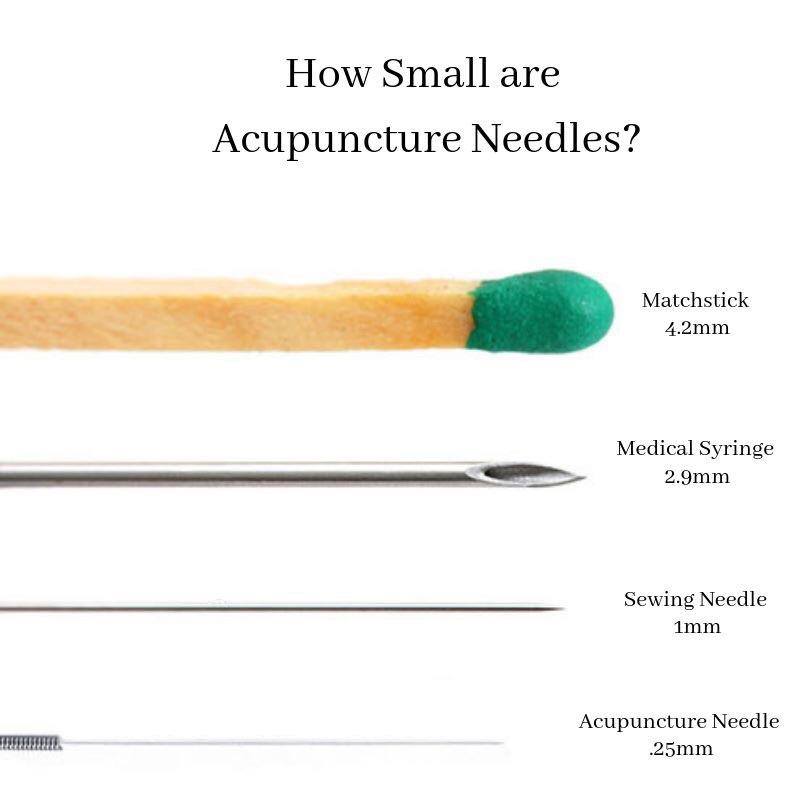One of the most common questions acupuncturists get from new patients is, ‘Can I see the needle?’
Understandably, if you’ve never had acupuncture done before, you’re probably curious about what the needle looks like. Acupuncture needles are actually surprisingly thin and aren’t really similar to what’s used to draw blood or for injections, or anything of this nature. There are many different components of an acupuncture needle, such as the shaft which is held by the acupuncturist and is akin to the ‘handle’ of the needle.
Does acupuncture hurt? Present by Lierre.ca
From there, the anatomy of an acupuncture needle breaks down into different elements. For example, the tip of the acupuncture needle is thinner than the shaft and is what’s inserted. Although high quality acupuncture needles are manufactured typically from stainless steel, the needle’s tip is so thin you can actually bend it. The tip is never inserted all the way under the skin. They’re only put in about a .25 of an inch, though areas with larger muscle mass may require deeper insertion.
Acupuncture needles are quite diverse, coming in different lengths and widths. Depending on where and how an acupuncturist intends to use acupuncture on your body, you may be recommended any of several different needle types. If you are scared of needles but still want acupuncture, you can request a thinner needle size. Most acupuncturists have at least a few different sizes to choose from. Acupuncture needles can actually be so thin that it would take twenty of them – at least – to fit into a larger hypodermic needle. Imagine that – so tiny you’ll barely even feel them.
There are five different parts of an acupuncture needle. There’s the tail at the end, the handle or shaft as we mentioned earlier, the root which is where the handle turns into the body, there’s the body which is the majority of the needle prepped for insertion and then the tip. If you buy acupuncture needles online, you already know almost all needles are for one-time use and disposable. In ancient China, needles were cleaned and reused but these days, for safety purposes, disposables are strongly recommended in the industry.
It’s worth noting sometimes thicker needles are used depending on the condition being treated. Thicker needles are argued to produce more stimulation but are not needed for everyone, like most acupuncture supplies. Similarly, short needles are used for places like the face, hands, and feet, while longer needles are for the legs, abdomen, and back. An acupuncturist may also manipulate how much of the acupuncture needle they insert. Shallow treatments are generally to relieve itching, relieve pain via pressure, for anyone with a weak pulse, or to relieve energy issues. Comparatively, deep insertions are for chronic conditions, pain, pain aggravated by pressure, problems relating to internal organs or the circulatory system, and for others.

